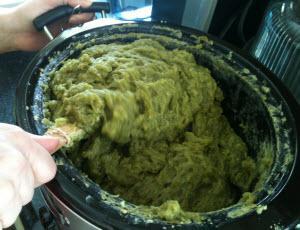 Rebatching your soap can literally be a “saving redo” for your soap recipe.
Rebatching your soap can literally be a “saving redo” for your soap recipe.
Sometimes your homemade soap bars are cracked, brittle, or just not performing like what you were hoping for.
These are all perfect examples as to why you would rebatch your recipe.But, it just doesn’t stop there.
Soapers rebatch a soap recipe for a variety of reasons.Below is a list of the benefits and key points you should know about rebatching a soap recipe.Rebatching soap is essentially making the soap twice.The first time you are completing the saponification process.(Or, you may be using soap that has already been through the saponification process.)Then, the second time you grate down the soap and melt it (for the reason you are rebatching).
Benefits of a Rebatch
Rebatching a soap recipe for the addition of heat sensitive ingredients:
Sometimes with homemade soap crafting, there are certain fragrances or essential oils that you really want to scent your soap bars; but worry that the scents cannot handle the high heat due to the saponification process.Many times with low flash point fragrances or essential oils, there is scent burn off.What results in your finished bars is soap that has little or no scent.Rebatching soap will not only safely allow you to add these heat sensitive scents, but allow them to stay true to their scent (less burn off).Also, some fragrance oils may cause cold process soap to seize (turning your soap into a solid mass with no fluidity).If you have your heart set on using one of these fragrances in your soap recipe, it can be done through the process of rebatching; without seizing your batch. Usually fragrance oils that seize your soap contain DPG. None of the fragrance oils we carry at Natures Garden contain DPG.
When it comes to coloring for cold process soap, it is very important to select ones that do not morph.Through the process of rebatching, you do not need to worry about pH sensitive colorants.And, sometimes this is just the answer to achieve that certain color.With rebatch soap, the soap base that you are using has already completed the saponification process; therefore, the colorants that normally would discolor will not.This is true for herbs that are used as natural soap colorants as well. Although it should be stated that some herbs naturally discolor due to oxidation.
Herbs not only offer color, but also wonderful and various benefits to your finished bars of soap.The only problem is they can directly affect your soaping procedure.Many herbs can speed up trace.Even more so, some herbs cannot survive the saponification process and will discolor as a result.With rebatching, this is not as big of an issue.Herbs like lavender flowers, for example, can be added without worrying that those beautiful flowers will turn brown.
Rebatch Opportunity
Rebatching allows for perfection:
Rebatching is also a wonderful method to use to correct a soap recipe.Things can get a little chaotic when soaping, and it could be possible that you overlooked adding one of your soaping ingredients and did not realize it until after the soap was molded.This resulted in your finished bars being too lye heavy.A rebatch allows you the perfect opportunity to add that missing ingredient and balance out your soap. This opportunity also allows for superfatting a recipe after saponification; or correcting soap bars that are too soft (made with too many fats or soft oils).
It is possible too that while making soap, your batter becomes too thick too quick for the addition of color or scent.With rebatch, the soap can be scented and colored like you never missed a beat.
Rebatch can also help correct a false trace recipe.
Rebatch, a Second Chance for Soaps
Sometimes, as a soaper, you will have pounds of soap scraps that you have on hand.Rebatching the soap lets you make loaves (and bars) of them once more.And will clear out all of that soaping space.
Points to Know about Rebatch
Some soapers love to rebatch soap, others rebatch only when necessary, and some soapers just do not like to rebatch.What ever your stance is on rebatch, it is a method that allows for many otherwise missed opportunities.Here are some key points to know about rebatch.
When making soap that is a rebatch, it will never completely liquefy.Even after spending hours in the crock pot, or on the stove top (with the double boiler method), the best you will ever achieve is more of a thick gel like state.Sometimes the soap may even be globby like.This does not affect the soap being soap, but it will affect the finished look of your bars.
When it comes to molding your rebatch soap, it is highly likely to get trapped air bubbles.This is just the nature of the thick gel like globby beast.It is extremely important to tap your mold as your fill it to prevent these pesky little buggers from being a problem in your finished soap bars.You may also notice that it may be slightly more difficult to mold your soap while in this state.This will be especially true if you are used to pouring it (like cold process soap batter).With rebatch soap, you will need a ladle and scoop the rebatch soap into your mold.
For the finished bars of rebatch soap, they will look very similar to hot process soap bars.They have a very rustic look to them, and will not have the traditional smooth and creamy look that cold process has.
On a final note, rebatching soap is truly a labor of love.There will be lots of TLC (because of the time put in) and additional work to do this method.But, if you are willing to put in the extra effort in (grating the soap), you will be able to rebatch your soap and have the end results that you are looking to achieve.

